 W
WA dogfight, or dog fight, is an aerial battle between fighter aircraft conducted at close range. Dogfighting first occurred in Mexico in 1913, shortly after the invention of the airplane. Until at least 1992, it was a component in every major war, despite beliefs after World War II that increasingly greater speeds and longer-range weapons would make dogfighting obsolete.
 W
WAir-to-air combat is the engagement of flying machines in warfare in which one or more aircraft tries to destroy one or more other aircraft. The Korean War saw the greatest amount of air-to-air combat since World War II. During the war the United States claimed to have shot down around 700 fighters. After the war the USAF reviewed its figures in an investigation code-named Sabre Measure Charlie and downgraded the kill ratio of the North American F-86 Sabre against the Mikoyan-Gurevich MiG-15 by half from 14:1 to 7:1. One of the factors inflating US numbers was that most dogfights took place over enemy-controlled area. The only way to confirm kills was through gun camera photography. USAF pilots were credited with a kill if the gun camera showed their guns striking the enemy aircraft even if no one actually saw it go down. However, Soviet kill claims were also highly exaggerated, based upon inherent flaws in their film grading procedures. For instance, the S-13 gun camera was not aligned with either the gunsight or either cannons' ballistics. It ran only while the firing buttons were depressed. Film graders commonly included unit commanders and political commisars who would confirm a "kill"—sometimes even if one had not been claimed by a pilot—when the camera's crosshairs touched the target for two movie frames. During the first 16 months of combat Soviet V-VS units claimed 218 F-86s destroyed when only 36 had been lost. This results in a 600 per cent inflation rate in victory credits over actual Sabres destroyed. However, these figures are complicated by the fact that the Americans routinely attributed combat losses to landing accidents and other causes.
 W
WOn 4 January 1989, two Grumman F-14 Tomcats of the United States Navy shot down two Libyan-operated Mikoyan-Gurevich MiG-23s which the Americans believed were attempting to engage them, as had happened eight years prior during the 1981 Gulf of Sidra incident. The engagement took place over the Mediterranean Sea about 40 miles (64 km) north of Tobruk, Libya.
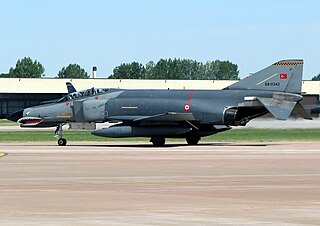 W
WOn 22 June 2012, a Turkish F-4 Phantom reconnaissance jet was intercepted and shot down by the Syrian Army in international airspace, after having violated Syrian airspace. The jet's pilots were killed; both Turkish and Syrian forces searched for them before recovering their bodies in early July. The incident was part of a series of incidents between Turkey and Syria since the beginning of the Syrian Civil War and greatly escalated the tensions between the two countries.
 W
WThe Action of 23 August 1967 was a major air battle which involved elements of the Vietnam People's Air Force (VPAF) and the United States Air Force (USAF). The air battle took place over the skies of North Vietnam as part of Operation Rolling Thunder, during the Vietnam War.
 W
WAdlertag was the first day of Unternehmen Adlerangriff, which was the codename of a military operation by Nazi Germany's Luftwaffe to destroy the British Royal Air Force (RAF). By June 1940, the Allies had been defeated in Western Europe and Scandinavia. Rather than come to terms with Germany, Britain rejected all overtures for a negotiated peace.
 W
WThe air battle over the Ore Mountains took place around midday on 11 September 1944 between German and American air forces over the crest of the Ore Mountains near the village of Oberwiesenthal, above the Bohemian market town of Schmiedeberg.
 W
WAfter World War II, there were many instances of air-to-air combat between the Soviet Union and the United States.
 W
WThe Banja Luka incident, on 28 February 1994, was an incident in which six Republika Srpska Air Force J-21 Jastreb single-seat light attack jets were engaged, and four of them shot down, by NATO warplanes from the United States Air Force. U.S. F-16 fighters southwest of Banja Luka, Bosnia and Herzegovina successfully engaged and destroyed several Bosnian Serb warplanes which had attacked a Bosnian factory, while suffering no casualties of their own. It marked the first active combat action, air-to-air or otherwise, in NATO's history.
 W
WThe Japanese raid on Darwin of 2 May 1943 was a significant battle in the North Western Area Campaign of World War II. During the raid a force of over 20 Japanese bombers and Zero fighters attacked the Australian town of Darwin, Northern Territory, inflicting little damage on the ground. This attack was the 54th Japanese airstrike over Australia. The Royal Australian Air Force (RAAF) unit responsible for protecting the town, No. 1 Wing RAAF, intercepted the Japanese force after it had completed its attack, and suffered heavy losses from the Japanese fighters, aggravated by fuel shortages. The results of the battle led to public concern, and No. 1 Wing adopted new fighting tactics which proved successful in countering later raids.
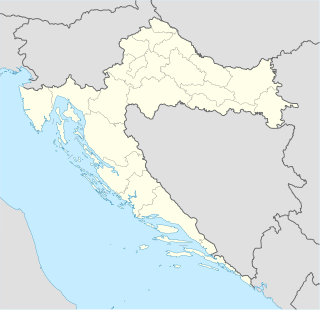 W
WThe 1992 European Community Monitor Mission helicopter downing was an incident that occurred on 7 January 1992, during the Croatian War of Independence, in which a European Community Monitor Mission (ECMM) helicopter carrying five European Community (EC) observers was downed by a Yugoslav Air Force Mikoyan-Gurevich MiG-21, in the air space above the village of Podrute, near Novi Marof, Croatia. An Italian and a French officer and three Italian non-commissioned officers were killed. Another ECMM helicopter flying in formation with the attacked helicopter made an emergency landing. The second helicopter carried a crew and a visiting diplomat, all of whom survived. The incident was condemned by the United Nations Security Council and the EC. As a result of the incident, the Yugoslav authorities suspended the head of the air force, and the Yugoslav defense minister, General Veljko Kadijević, resigned his post. The events followed the end of the first stage of the war in Croatia and closely preceded the country's international recognition.
 W
WIn the first Gulf of Sidra incident, 19 August 1981, two Russian made Libyan Su-22 Fitters fired upon and were subsequently shot down by two U.S. F-14 Tomcats off the Libyan coast. Libya had claimed that the entire Gulf was their territory, at 32° 30' N, with an exclusive 62 nautical miles fishing zone, which Libyan leader Muammar Gaddafi asserted as "The Line of Death" in 1973. Two further incidents occurred in the area in 1986 and in 1989.
 W
WThe Ja'Din shootdown incident occurred on 18 June 2017, when a United States Navy F/A-18E, shot down a Syrian Air Force Su-22 Fitter with an AIM-120 AMRAAM missile after it reportedly attacked U.S. backed Syrian Democratic Forces positions in the town of Ja'Din south of Tabqah. It was the first time the US shot down a manned aircraft since 1999 and the first with the F/A-18E variant.
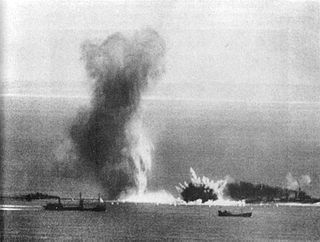 W
WThe Kanalkampf was the German term for air operations by the Luftwaffe against the British Royal Air Force (RAF) over the English Channel in July 1940. The air operations over the Channel began the Battle of Britain during the Second World War. By 25 June, the Allies had been defeated in Western Europe and Scandinavia. Britain rejected peace overtures and on 16 July, Adolf Hitler issued Directive 16 to the Wehrmacht, ordering preparations for an invasion of Britain, under the codename Unternehmen Seelöwe.
 W
WThe Air battle over Merklín was an air-to-air engagement between Czechoslovak and USAFE air units over the Czech village of Merklín, in the Bohemian Forest, on 10 March 1953. During the action Czech pilot Jaroslav Šrámek, flying a MiG-15, shot down one of a pair of American F-84E Thunderjets. The American pilot, Lt. Warren G.Brown ejected from the aircraft, which crash-landed in German territory, approximately 35 kilometres (22 mi) from the border, and survived.
 W
WThe Ofira Air Battle was one of the first air battles of the Yom Kippur War. On 6 October 1973, Egypt launched a massive surprise attack on Israel that included over 200 Egyptian aircraft participating in an opening airstrike. The Israeli Air Force Base Ofir at Sharm el-Sheikh came under attack by 20 Egyptian Air Force MiG-17s and their eight MiG-21 escorts. Not realizing the extent of the attack, Israel quickly scrambled two F-4E Phantom II fighter jets. The Israeli pilots proceeded to jettison their external fuel tanks and engage all 28 MiGs in aerial combat. In just under six minutes, seven Egyptian MiGs had been shot down and the remaining Egyptian planes disengaged and returned to Egypt. The Israeli Phantoms returned to their base. The Egyptians dispute the Israeli account of the battle, but they never did provide their own version of what happened.
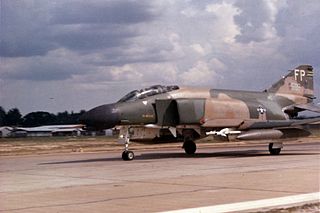 W
WOperation Bolo was a United States Air Force mission during the Vietnam War, considered to be a successful combat ruse.
 W
WThe Battle of Palmdale was the attempted shoot-down of a runaway drone by United States Air Force interceptors in the skies over Southern California in mid-August 1956. The drone was launched from Point Mugu Naval Air Station and soon went out of control. Interceptor aircraft took off from Oxnard Air Force Base and caught up with the drone, but were ultimately unable to bring it down, despite using all of their rockets. After it ran out of fuel, the unmanned aircraft crashed in a sparsely populated tract of desert.
 W
WA Turkish Air Force F-16 fighter jet shot down a Russian Sukhoi Su-24M attack aircraft near the Syria–Turkey border on 24 November 2015. According to Turkey, the aircraft was fired upon while in Turkish airspace because it violated the border up to a depth of 2.19 kilometres for about 17 seconds after being warned to change its heading 10 times over a period of five minutes before entering the airspace. The Russia Defence Ministry denied the aircraft ever left Syrian airspace, counter-claiming that their satellite data showed that the Sukhoi was about 1,000 metres (1,100 yd) inside Syrian airspace when it was shot down. The U.S. State Department said that the U.S. independently confirmed that the aircraft's flight path violated Turkish territory, and that the Turks gave multiple warnings to the pilot, to which they received no response and released audio recordings of the warnings they had broadcast. Turkish President Recep Tayyip Erdogan pointed out that Turkey had the right to defend its airspace. Russian president Vladimir Putin said that the U.S. knew the flight path of the Russian jet and should have informed Turkey; two U.S. officials said that Russia did not inform the U.S. military of its jet's flight plan.
 W
WThe Battle of Sunchon was an air battle fought near the city of Sunchon, North Korea on 1 December 1951, during the Korean War. Up to 14 Gloster Meteor jets of the RAAF's No. 77 Squadron were attacked by at least 20 MiG-15s of the Soviet Union's 176th Guards Fighter Aviation Regiment. The MiGs carried Chinese air force markings, as the USSR was not officially a combatant in the Korean War. Its experience in the battle led to No. 77 Squadron's being redeployed to ground attack duties.
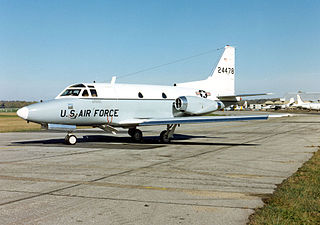 W
WOn 28 January 1964, an unarmed T-39 Sabreliner aircraft of the United States Air Force was shot down while on a training mission over Erfurt, East Germany, by a MiG-19 jet fighter of the Soviet Air Force. The occupants of the aircraft were Lieutenant Colonel Gerald K. Hannaford, Captain Donald Grant Millard and Captain John F. Lorraine. All three died, becoming direct casualties of the Cold War in Europe.